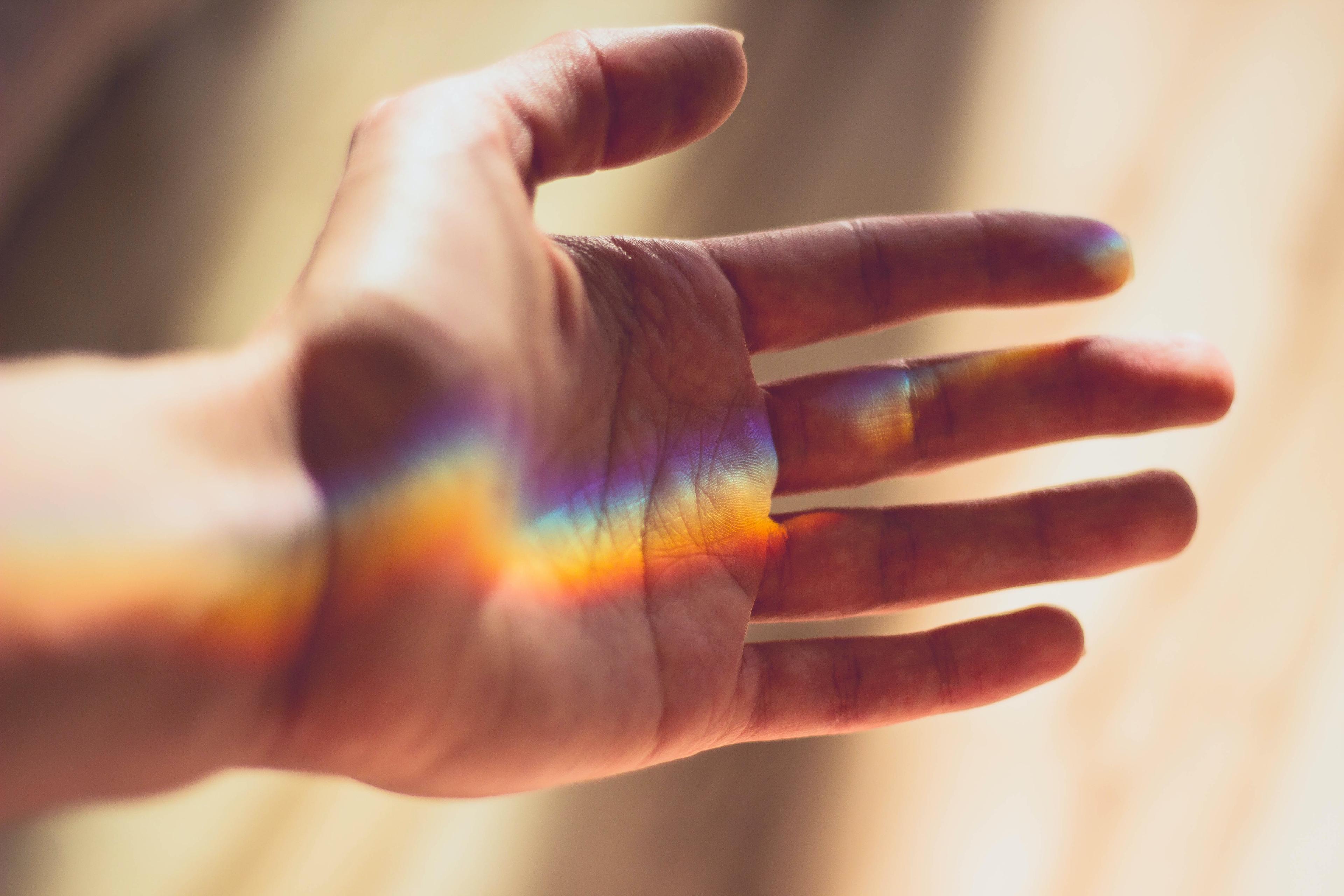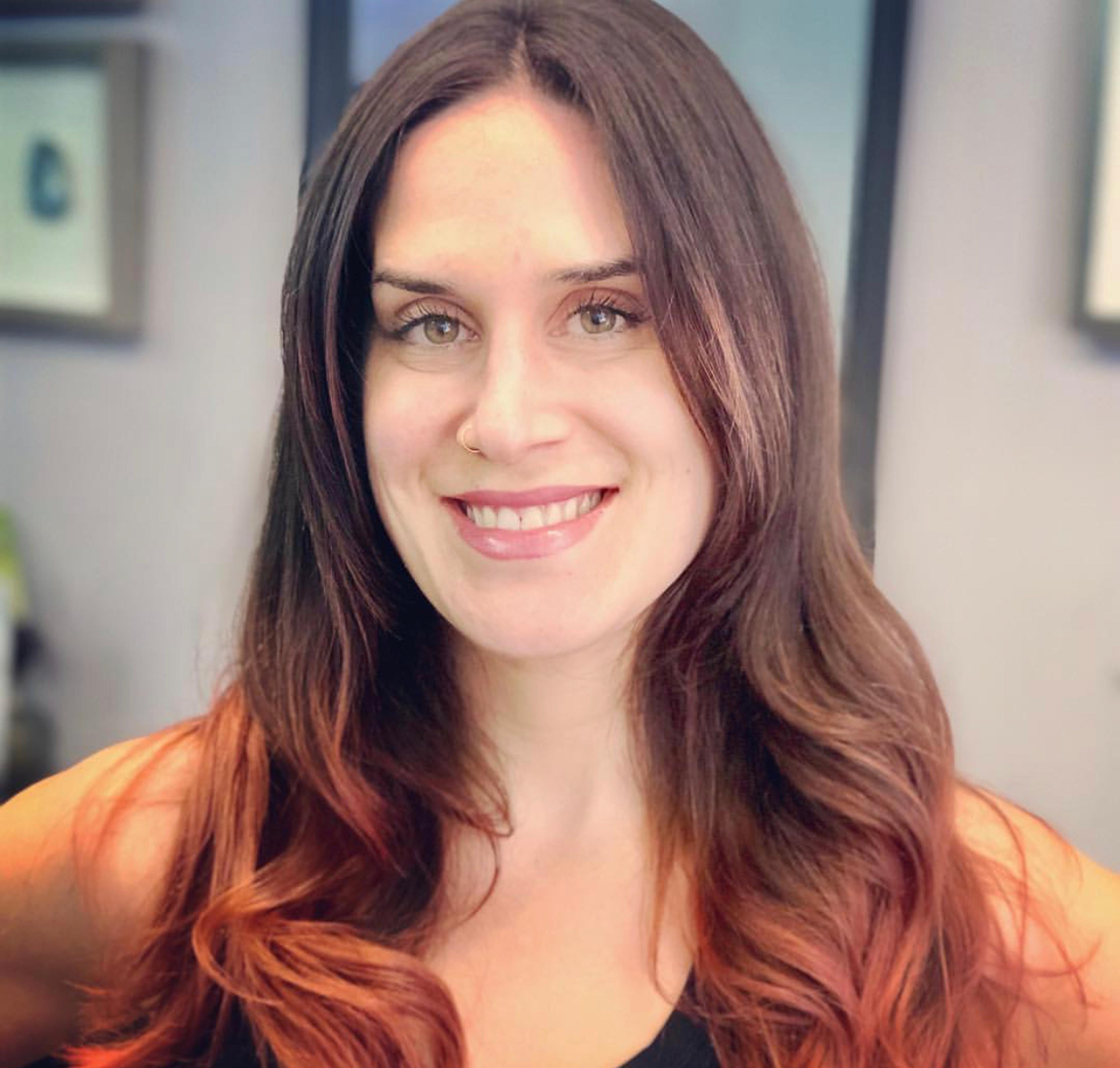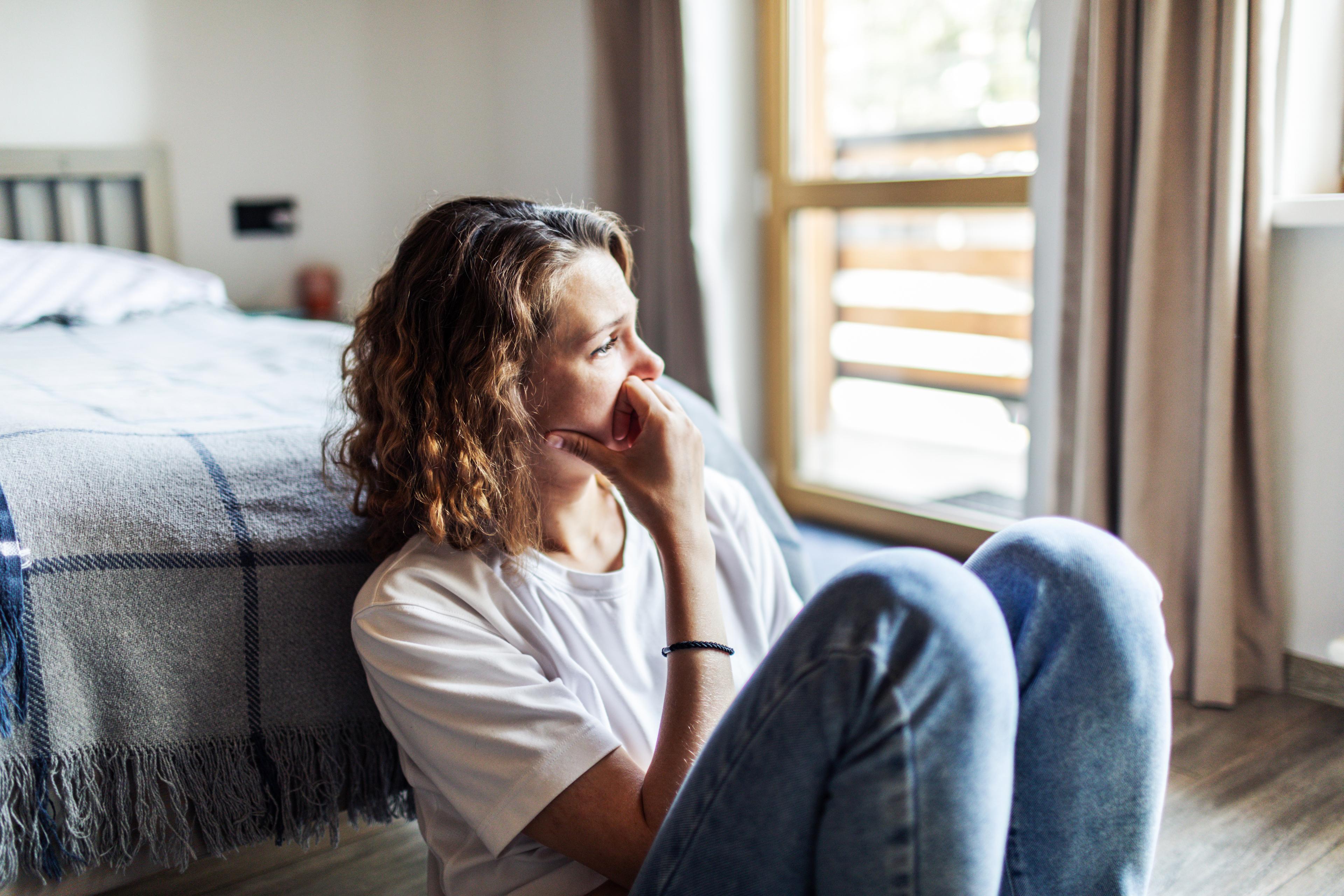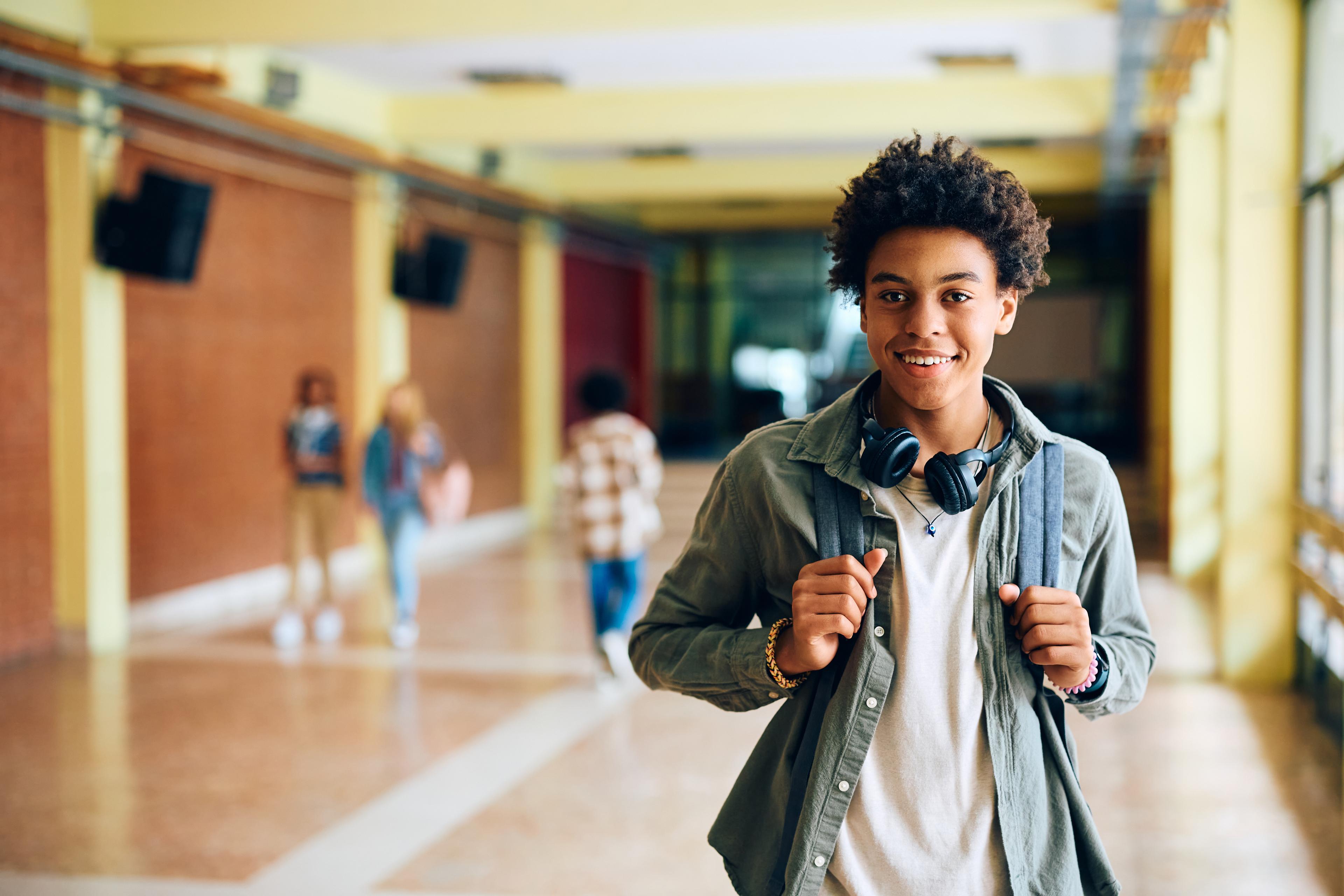
Growing up, Equip Peer Mentor Sean Stanisz felt different than his peers for a variety of reasons. But his physical appearance—and the scrutiny he received because of it—came to define his adolescent experience. “I was made aware of my fat body before my queer identity,” Stanisz says. “Especially when others would bully me about how certain aspects of my body, like my broad chest and hips, aligned more with opposing gender identities.”
Stanisz (who uses he/they pronouns) says the unsolicited commentary on his body made him question his own gender identity. He didn’t feel masculine or feminine enough, resulting in what they call “waves” of gender dysphoria, or severe distress caused by an incongruence between a person's gender identity and the gender they were assigned at birth. But even when Stanisz began embracing his queer identity, he struggled to find relatable body representation in the LGBTQIA+ community.
“A lot of the imagery in queer culture depicted the stereotype of effeminate, thin, white men or hyper-masculine white men,” Stanisz says. “Even in a community that was a haven for personal acceptance and that gave my younger self hope, I experienced isolation and pressure to conform to certain body standards.”
Stanisz is far from alone in this experience. Research has indicated that eating and body issues may impact members of the LGBTQ+ community in ways that are unique and distinct. According to the Trevor Project’s 2022 National Survey on LGBTQ Youth, about 87% of LGBTQIA+ youth reported dissatisfaction with their bodies, and these rates were higher among transgender and nonbinary youth compared to cisgender youth. What’s more, those who expressed body dissatisfaction reported higher rates of depression and anxiety symptoms, self-harming behaviors, and suicidal ideation than those without body dissatisfaction. We also know that LGBTQIA+ folks are at increased risk for developing eating disorders, and body dissatisfaction can play a significant role there.
These alarming statistics illuminate the fact that LGBTQIA+ individuals face myriad challenges and risk factors that increase their likelihood of struggling with body image or even developing an eating disorder. Here’s how appearance and gender ideals, norms, and expectations can contribute to body dissatisfaction and disordered eating in the LGBTQIA+ population—and how community members and allies can push back against the rampant pressures and reduce body image struggles.
The connection between gender identity, appearance ideals, and body image
Unrealistic, unattainable, and super specific (often thin, Eurocentric) appearance ideals can negatively impact just about anyone who doesn’t fit the narrow beauty standards. But those in the LGBTQIA+ community often face additional challenges when it comes to physical appearance, societal expectations, and cultural stereotypes.
“Appearance ideals look different for various identities within the LGBTQIA+ community,” says Equip Research Intern Bek Urban. “In my experience as a nonbinary person, I’ve felt a lot of pressure to be ‘nonbinary enough’ for society. There’s this idea that a nonbinary person's body should look androgynous and have a ‘genderless appearance,’ both of which are often equated with thinness. This unreachable goal exists because of other people’s ideas about what it ‘looks like’ to be nonbinary.”
Equip Senior Program Development Lead Scout Silverstein believes the problems that arise from not fitting societal expectations for gender are rooted in something called “desire capital,” or the social power a person accrues as a result of their desirability. “We live in a society where the degree to which a person meets appearance ideals is often directly tied to their desire capital,” Silverstein says. “This impacts how a person is treated—from daily interactions to job opportunities to romance. With LGTBQIA+ people already facing discrimination and bias in these areas, there may be a perceived need to increase desire capital by meeting appearance ideals”
Silverstein explains that when most people discuss gender dysphoria, they're referring to an “internal distress experienced by a transgender person due to their gender expression and gender identity being in misalignment”—but there’s more to it than that. “It warrants more exploration,” Silverstein says. "Gender dysphoria may also be a response to external pressures, like rigid appearance ideals or gender norms,” Silverstein says. “Screening for eating disorders is necessary and access to gender affirming care is essential for transgender people who desire social or medical transition.”
How threats to the LGBTQIA+ community compound body image issues
“Body image pressures can be distressing for all people. For folks within the LGBTQIA+ community, however, they can be tied to fear for their safety and can be, quite literally, life or death,” Urban says. “I think some of the most troubling concerns are those facing the trans and gender-expansive community. In a time when violence against trans folks is on the rise and being visibly trans in public is being criminalized, there are often understandable and urgent pressures to make your body fit into a mold of what society expects. Fitting into such molds may be protective and, in many places right now, necessary for safety.”
Stanisz adds that for trans and gender non-conforming individuals especially, body image pressures have reached an unprecedented high “as legislation across the country actively sees their bodily existence as a threat on a political level.” Because of the increased attention and vocal social and political prejudice, those who identify as trans or nonbinary may experience particularly intense feelings of distress or dysphoria.
“There’s the sense of a heightened need to present in a binary-specific appearance in order to navigate society safely and without persecution,” says Stanisz. Silverstein agrees, noting that “those who don’t meet appearance ideals are more often treated as disposable. Additionally, for transgender people, safety may be bound with one's ability to be perceived as their correct gender.”
How LGBTQIA+ community members and allies can protect and bolster body image
Unfortunately, many of the factors that contribute to body image distress and eating disorders in the LGBTQIA+ community are societal and systemic. However, there are concrete actions that allies and community members can take to push back against these challenges.
“Finding support from the community can be super helpful for LGBTQIA+ folks who may be struggling with body image concerns, disordered eating, or an eating disorder,” Urban says. “Peer support can help people find community and hear experiences of others who understand some of the unique things that cisgender, heterosexual people may not be able to. Affirming providers are also vital!”
Silverstein suggests LGBTQIA+ individuals look for like-minded peers who may also be navigating similar physical and emotional journeys. “Find your local queer beach or swim club, connect with others who are also on the journey of body liberation, curate your social media feed,” Silverstein says. “It can be helpful to think about the concept of gender euphoria: what actions help you to feel recognized, valued, respected, and free in your gender?”
Urban seconds the suggestion to explore gender euphoria, sharing that it was integral in their own recovery. Gender euphoria can be defined as a feeling of bliss and happiness that comes when a person feels alignment between their gender identity and their gender expression. Urban says leaning into their authentic identity, regardless of whether their physical appearance “fit” societal expectation was critical to recovery. “Focusing on gender euphoria and joy helped me to decouple my identity from felt pressures and become more authentic to myself—which lets me better care for my body.”
When it comes to the kind of support that allies, friends, and family members can offer, Urban says speaking out is especially important and necessary to ensure the safety and health of those who identify as LGBTQIA+. “The most pressing thing right now is to be an active force advocating with the community,” Urban says. “More allies are needed to speak out to protect LGBTQIA+ folks from legislation and widespread oppression. Creating a world that is safe for LGBTQIA+ folks in general creates a world that is less traumatizing and more open to acceptance and inclusion of all bodies, no matter gender or gender expression.”
- McClain, Zachary, and Rebecka Peebles. “Body Image and Eating Disorders Among Lesbian, Gay, Bisexual, and Transgender Youth.” Pediatric clinics of North America vol. 63,6 (2016): 1079-1090. doi:10.1016/j.pcl.2016.07.008
- Zamantakis, Alithia & Lackey, Dresden. (2021). Dying to be (A)Gendered: An Exploratory Content Analysis of Trans/Nonbinary People’s Experiences with Eating Disorders. Sociological Inquiry. 92. 10.1111/soin.12425.
- Beischel, Will J et al. “"A little shiny gender breakthrough": Community understandings of gender euphoria.” International journal of transgender health vol. 23,3 274-294. 3 May. 2021, doi:10.1080/26895269.2021.1915223







